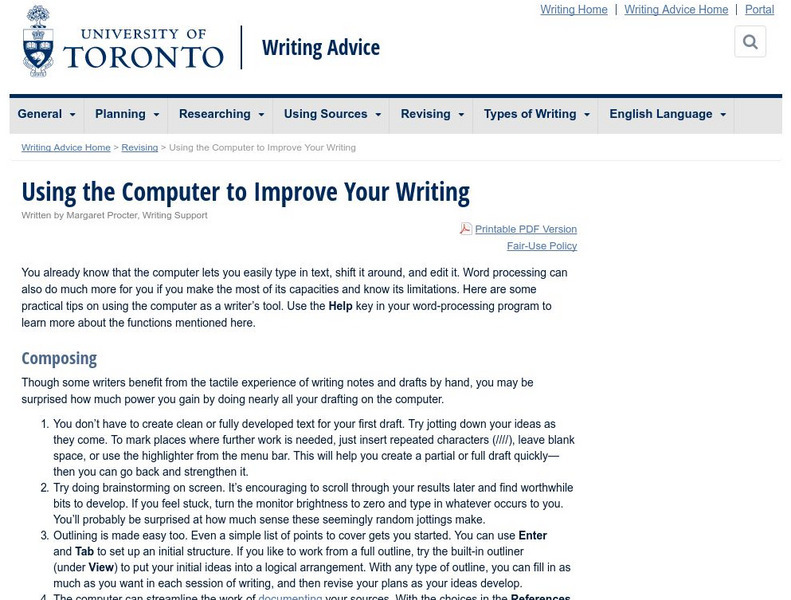Hi, what do you want to do?
Curated OER
Proofreading: Lesson 8
Teacher reads the material that is printed in boldface type inside the boxes aloud to the students. Information in regular type inside the boxes and all information outside the boxes should not be read to the students. Possible student...
Curated OER
Double Jeopardy-Homophones
Second graders identify homophones as words that sound alike but have different meanings. They, given a pair of homophones, are to explain the meanings of the words using gestures, role playing, or drawing a picture with their partner.
Curated OER
Recycling: Creative Uses for Items
Third graders list creative uses for old objects. In this recycling lesson, 3rd graders work in groups to brainstorm creative, new uses for old, everyday items. This is the first lesson in a unit on recycling.
Curated OER
The Multimedia Heart
Third graders research the different aspects of the human heart. Groups work through steps to create a multimedia slide presentation. The presentation must follow pre-set criteria.
Curated OER
Show You Care
Students construct a four-line poem to be used on the inside of a Valentine's Day card. They use a digital camera to show themselves to their "buddies" (local nursing home patients) who receive the cards on Valentine's Day.
Curated OER
Fragments Wanted (Not)
Students rewrite newspaper employment ads using complete sentences.
Curated OER
Family Cookbook
Second graders, in groups, produce a Family Cookbook by bringing recipes from home.
Curated OER
The Star of My Show
Students recognize how they are stars in their own rights. In this language arts lesson, students consider their personal achievements as they make a star mobile that includes written life event highlights.
Curated OER
Preventing Childhood Diseases Project
Second graders become informed advocates in the prevention of childhood diseases. This takes place during the Preventing Childhood Diseases Project.
Curated OER
Community Brochures
Second graders research facets of their community in order to create an informational brochure. After brainstorming ideas of what could be included in the brochure, student groups get information from the internet, the library or a...
Curated OER
Your Name in an Acrostic Poem
Second graders use a word processing program (Word, Claris Works...) to create an acrostic poem.
Curated OER
Charting the Discovery of the Americas
Students create chart using Microsoft Word depicting how trade led to the exploration of different regions of the world.
The Write Place
Literacy Education Online: Strategies for Revising and Editing on Computers
Comprehensive discussion on how to edit material on computers. Explains how to perform functions in 2 general areas: spell check and search & replace. Also explains difference between doing this "on paper" and on computer. W.11-12.6...
Sophia Learning
Sophia: Revision Techniques: Using a Professor's Notes
This slideshow lesson focuses on revising using teacher comments. It discusses the advantages of teacher notes on rough drafts, how to use the notes to improve the final, examples from sections of marked student papers, editing and...
Sophia Learning
Sophia: Revising Techniques
This tutorial begins with a PowerPoint presentation, "What to Look for When Revising," which is followed by information about the importance of the teacher or professor's notes. It also includes a PDF revision checklist, a peer editing...
Sophia Learning
Sophia: Revising Thesis and Topic Sentences
This tutorial focuses on revising the thesis and topic sentences using two videos and two slideshows. The first video discusses a 3-step revising process for making sure the thesis fits the paper; the second video focuses on what...
University of Toronto (Canada)
University of Toronto: Using Computers to Improve Your Writing
Tips from the University of Toronto on using word processing features as aids in composing and revising papers. W.9-10.6 Technology, CCSS.ELA-Literacy.CCRA.W.6, W.11-12.6 Technology
Online Writing Lab at Purdue University
Purdue University Owl: General Writing Resources
This helpful resource details the process of writing, including how to plan, write, and revise. Content also includes the different types or genres of writing, and exercises in grammar and mechanics.
Sophia Learning
Sophia: Editing Techniques: Writing a Reverse Outline
This slideshow lesson focuses on writing a reverse outline as a post writing strategy for assessing your paper for weak or missing aspects. It explains how to create the outline using a rubric if available and provides a skeletal example...
Online Writing Lab at Purdue University
Purdue University Owl: Where Do I Begin?
This article provides an overview of writing a research paper by first understanding the specific assignment and then offering links to how to begin research; outlining; drafting; and revising, editing, and proofreading.
Grammarly
Grammarly Handbook: Appearance
This page focuses on the appearance of the paper after the writing is complete. It offers links to a pre-printing checklist and a post-printing checklist.
Grammarly
Grammarly Handbook: The End
A list of text requirements that may be necessary after the conclusion of a research paper.
Grammarly
Grammarly Handbook: Organization
A list of the six parts of a thesis paper with links to more information on each.
Grammarly
Grammarly Handbook: Appropriate Vocabulary
This page focuses on the choice of vocabulary in a paper: Is it clear and appropriate for the audience? Does the vocabulary fit the subject matter? W.11-12.2d Lang/Fig/Voc

























